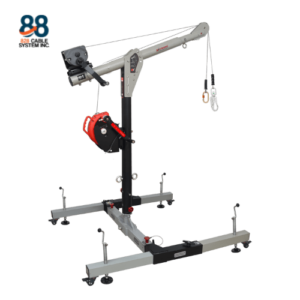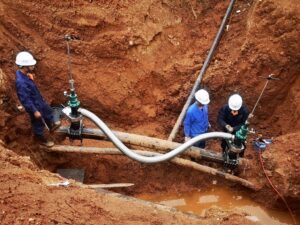Confined spaces are often overlooked yet present significant dangers, especially in industries like maritime, construction, and manufacturing. These spaces are not designed for continuous occupancy and often lack adequate ventilation, making safety protocols and proper equipment crucial. Understanding confined space safety can prevent accidents and save lives.
What is a Confined Space?
A confined space is an area that is large enough for a worker to enter and perform tasks but has limited or restricted means for entry or exit. Common examples on cargo ships include boilers, pressure vessels, cargo holds, and fuel oil tanks. These spaces typically have restricted access, no windows for fresh air, and are not intended for constant occupation, posing unique challenges for those who work in them.
Risks Associated with Confined Spaces
Confined spaces come with numerous hazards, including limited oxygen levels, the presence of toxic gases, and the potential for flammable atmospheres. Real-life incidents, such as asphyxiation or explosions, highlight the severe health and safety risks involved. Therefore, conducting thorough risk assessments before entry is essential to identify and mitigate potential dangers.
Essential Safety Gear for Confined Spaces
Personal Protective Equipment (PPE) is crucial for ensuring the safety of workers in confined spaces. Essential PPE includes respiratory protection, protective clothing, helmets, gloves, and eye protection. Using PPE as the first line of defense is vital, but it must be selected based on a comprehensive risk assessment to address the specific hazards of each confined space.
Preventative Measures and Management Controls
While PPE is important, prioritizing preventative measures and sound management controls is even more critical. Implementing effective ventilation systems, reliable communication methods, and continuous monitoring devices can significantly enhance safety. Additionally, training and awareness programs for workers, along with well-planned emergency response drills, are essential components of a comprehensive safety strategy.
Equipment for Safe Entry and Work in Confined Spaces
Specialized equipment is necessary to ensure safe entry and work in confined spaces. Gas detectors, ventilation systems, harnesses, and rescue tools are among the essential equipment. Proper usage and maintenance of this equipment, along with regular checks and calibration, are vital to ensure they function correctly when needed.
Best Practices for Confined Space Safety
Adopting best practices for confined space safety can greatly reduce risks. Key steps include conducting thorough risk assessments, implementing a permit-to-work system, and ensuring continuous monitoring. Collaboration and communication among workers are crucial, as is having a standby person outside the confined space. Continuously improving safety protocols based on feedback and new information is essential for maintaining a safe work environment.
Legal and Regulatory Requirements
Compliance with safety regulations and standards is mandatory for confined space work. This includes adhering to international guidelines and local laws governing confined space entry and safety. Non-compliance can lead to severe consequences, including legal penalties and increased risk of accidents.
Takeaway
Ensuring safety in confined spaces requires a comprehensive approach that includes preparation, proper equipment, and strict adherence to safety protocols. By understanding the risks, equipping workers with the right PPE, and following best practices, we can create safer work environments and protect the well-being of those who work in these challenging conditions.




